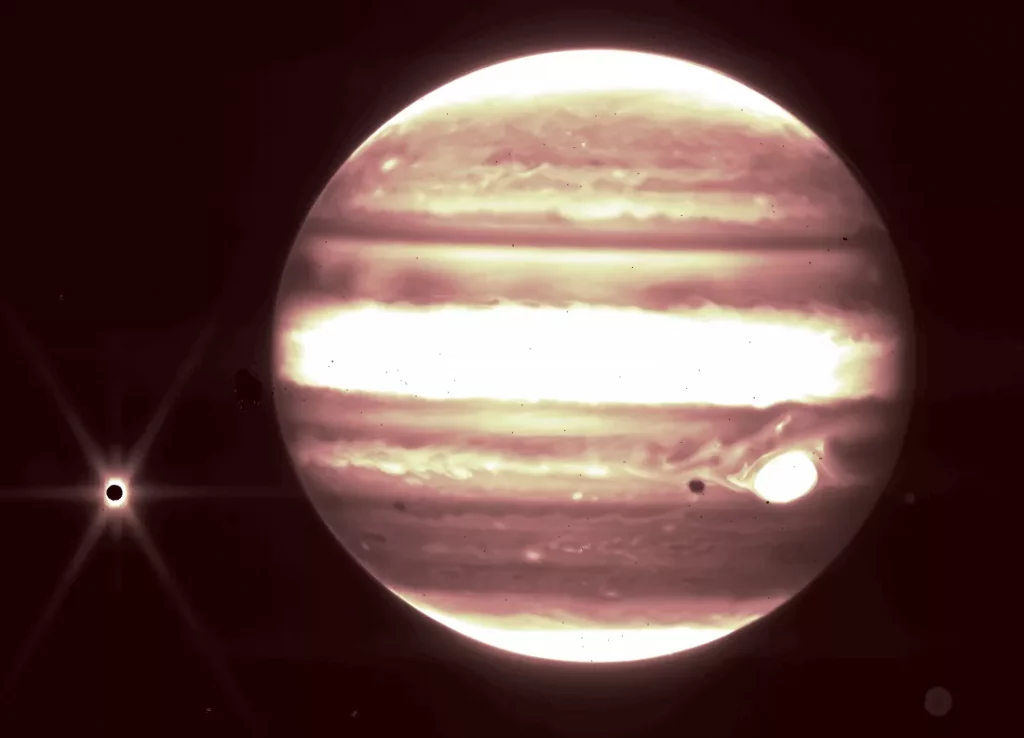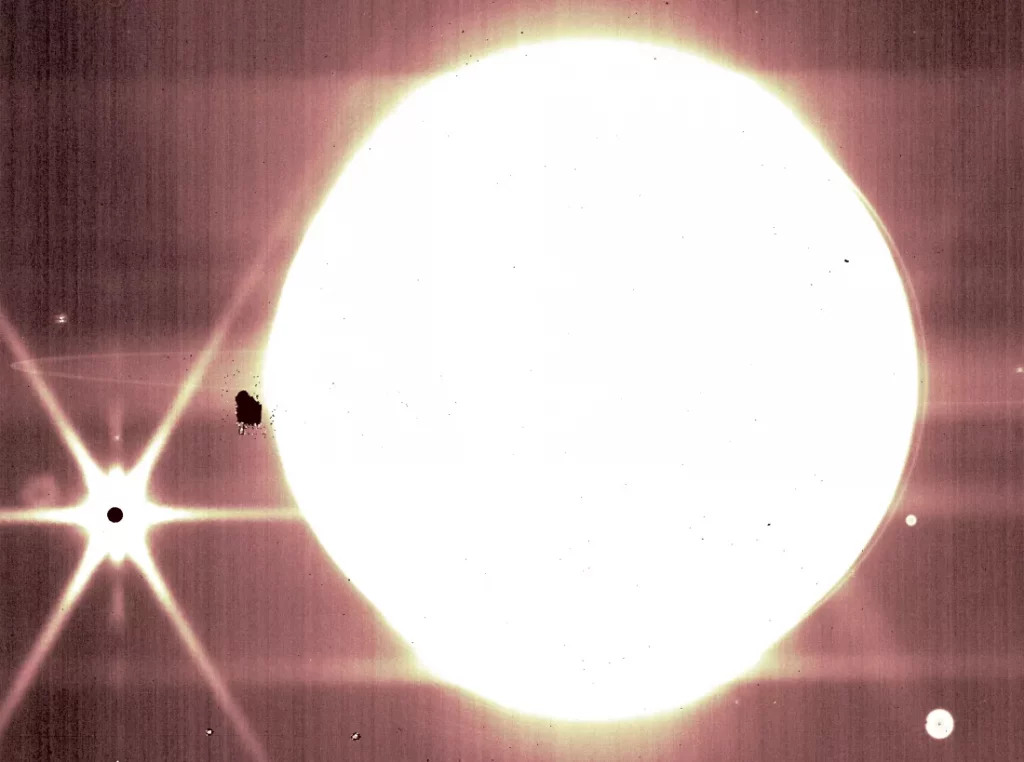Given that NASA made the first full-color photographs from the ground-breaking telescope available to the public this week, it’s been a huge week for the James Webb Space Telescope. The images and data that were taken during the scope’s commissioning phase are now being made available by NASA.

Although Webb already reached its intended orbit, it required six months of commissioning to ensure that all of its instruments were operating as intended. To test its tools, Webb focused on “local” objects during this time, including Jupiter and some asteroids. Now, NASA is disseminating this information.
The picture depicts Jupiter and its moon Europa as viewed via the 2.12-micron filter on Webb’s NIRCam sensor. The unique bands that encircle the gas giant, as well as the planet’s Great Red Spot, are readily discernible.
“Combined with the deep field images released the other day, these images of Jupiter demonstrate the full grasp of what Webb can observe, from the faintest, most distant observable galaxies to planets in our cosmic backyard that you can see with the naked eye from your actual backyard,” said Bryan Holler, a scientist at the Space Telescope Science Institute in Baltimore.
Webb was also able to spot some of the rings of Jupiter using the NIRCam’s 3.23-micron filter.
“The Jupiter images in the narrow-band filters were designed to provide nice images of the entire disk of the planet, but the wealth of additional information about very faint objects (Metis, Thebe, the main ring, hazes) in those images with approximately one-minute exposures was a very pleasant surprise,” said John Stansberry, observatory scientist, and NIRCam commissioning lead at the Space Telescope Science Institute.
The crew was happy with Webb’s capacity to follow changing targets as well. The telescope can follow objects moving at speeds up to 30 milliarcseconds per second, which is faster than Mars. The researchers discovered during testing with different asteroids that Webb can collect useful data on a target traveling up to 67 milliarcseconds per second, which is more than twice as fast as it was intended for.

“Everything worked brilliantly,” said Stefanie Milam, Webb’s deputy project scientist for planetary science based at NASA’s Goddard Space Flight Center in Greenbelt, Maryland.
also read:








